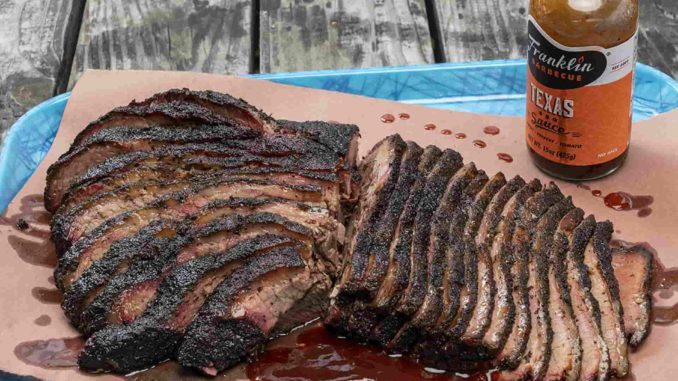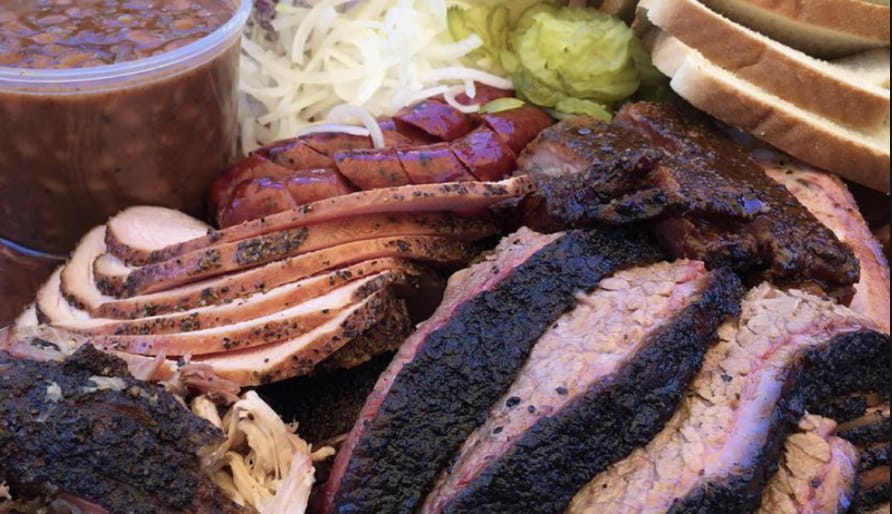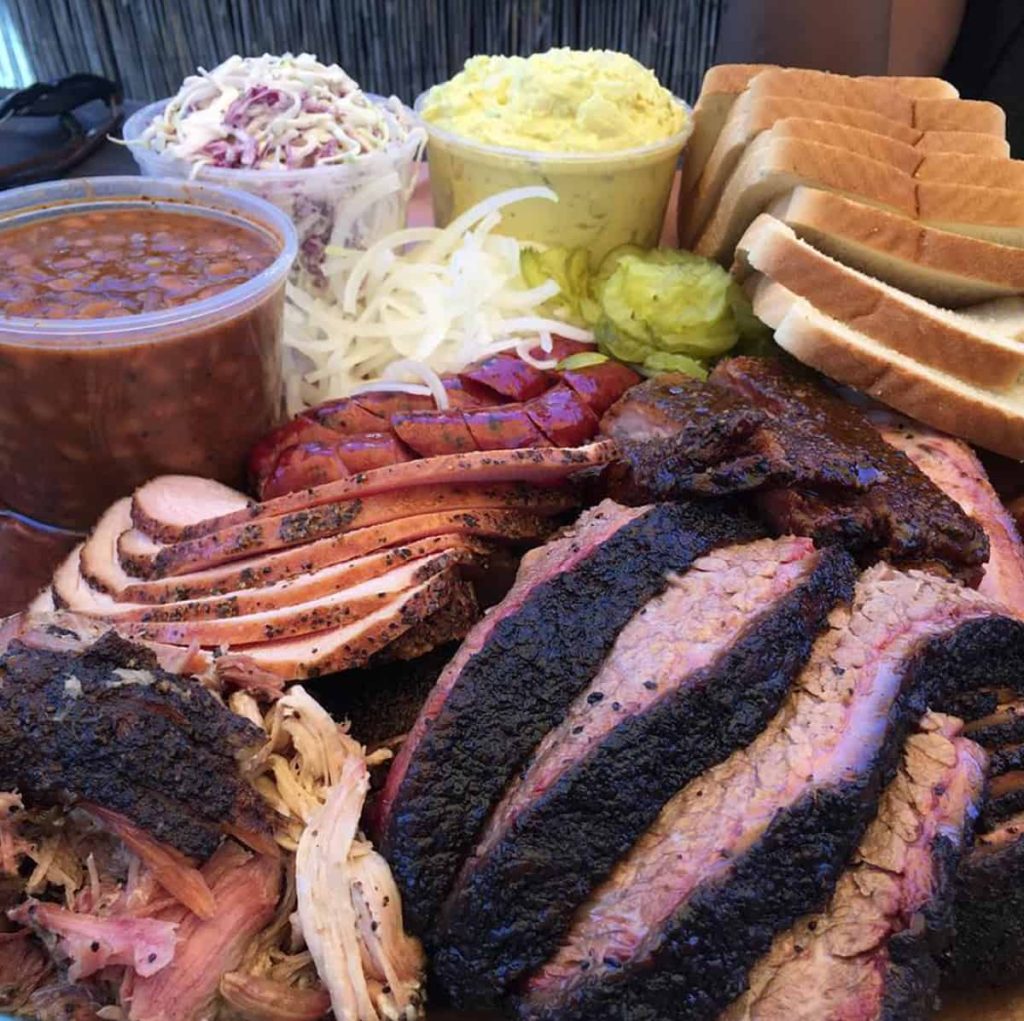
BBQ connoisseurs know that there’s nothing like a savory morsel of a smoked brisket or succulent bite of a flawlessly smoked rib. Locations all over the U.S. have gained a reputation for churning out some of the best BBQ that melts in your mouth, but it would be hard-pressed to match the heavy hitting, historic pitmaster skills of BBQ savants in Missouri, Tennessee, Georgia and of course, Texas.
When Texas BBQ comes to mind, the vision often includes a crowd of people lining up at the earliest sign of the restaurant opening as a mesquite smelling smoke pours from beyond a modest building. Once inside, the delectable pickings range from brisket, pork ribs, beef ribs, chicken, handmade sausage and rib tips. In Texas, the sauce — an essential part of a BBQ entree — is an added characterization of the BBQ style made for only enhancing the meat, not making up for the lack of its seasoning.

The sides are even more exquisite with options for the signature potato salad, southern mac and cheese, collard greens, green beans, baked beans, coleslaw and even more. It wouldn’t be a BBQ meal without the appropriate garnishes, consisting of white onion, good ‘ole dill pickle slices, and sometimes jalapeños, accompanied with two slices of white bread. Desserts are a whole different story, with Blue Bell Ice Cream, banana pudding, peach cobbler or pecan pie rounding out the meal.
When it comes down to it, establishments like Atlanta’s Fox Bros. Bar-B-Q, Memphis’ Central BBQ, or Austin’s Franklin Barbecue uphold the tradition of serving quality smoked meats and sensical side pairings, but there’s some places that just can’t get it right, not even if their reputations depended on it. High on that list is the always sunny Southern California (disclaimer, where the region lacks in BBQ, it makes up for in other areas).

With the exception of a few Texas-inspired top notch restaurants, such as Los Angeles’ Bludso’s Bar & Que, most of the region is plagued with BBQ imitators without a hint of a clue on what real BBQ tastes like. The very mention of a dry rub or using the marbling of a brisket as a way to infuse flavor and tenderness in the meat is beyond some restauranteurs who claim to have the best BBQ in the area. With that said, it should be a sin for a restaurant to slap “Texas” anything in relation to their BBQ if they are committing any of the cardinal sins in BBQ anatomy.
Number 1, never, ever boil the meat. While it may be easy to fool the taste buds of the less experienced consumer, real BBQ fans know the difference between a boiled meat and a smoked one. It’s the overall aesthetic, that includes the fragrance, texture, and taste. Do it the right way, or don’t do it at all!
Number 2, fat should not be the main entree. So many times, a restaurant will interpret a regular brisket versus a lean one as giving the customer a heap of greasy, pudgy fat and that ain’t right. The meat a restaurant serves should have meat! While we are on the subject of meat, BBQ restaurants should be more pickier about their sausage. One thing that’s always disappointing is when a BBQ eatery serves a bad sausage with cheap casing and poor quality meat that usually comes as a mix of pork and beef. The customer might as well indulge in a Vienna sausage.
Number 3, the BBQ sauce should never be the main selling point of a BBQ restaurant. Some pitmasters have famously made a lane in this area, producing some of the best robust spicy and sweet flavors. But, again, this is supposed to be an enhancement, not the main entree. So, the moment a restaurant drenches its meats in a whole bunch of sauce before even tasting the meat, you can bet that the actual BBQ is subpar.
Number 4, make sure the mac and cheese is on point. Just like fries come with ketchup, mac and cheese has been a longstanding traditional side for BBQ. If the macaroni shells are bloated or the cheese looks artificial, most likely the BBQ won’t be good.

Number 5, kill the sweet and sour pickled onions and pickles. Keep it dill, sliced and simple. It’s nothing like an over-the-top tart tasting garnish to overwhelm a meal. Again, the name of the game is enhancement.
Number 6, stop adding white sugar to everything. There’s no need to have sugar in the cornbread, mac and cheese and collard greens. While non-cooks seem to think that adding sugar is some secret weapon that elevates their cooking abilities, it’s really a cop out that exposes their amateur skills. It takes a combination of spices, herbs and wonder-working concoctions to come up with a perfect blend of flavorful, multi-dimensional seasoning, which brings us to Number 7 — learn about dry rubs.
Dry rubs, a mixture of herbs and spices used to add flavor and texture, can consist of garlic powder, smoked paprika, brown sugar, ground black pepper, onion powder, kosher salt, and even more. YouTube, Google or a mentor with roots from Texas even, may be the best shot to increase knowledge on how to properly season BBQ. It’s unbelievable how some restaurants are complacent when it comes to serving tasteless, bland food. Others opt for marinades, but the result is just not the same.
Lastly, number 8, barbecue with care. The art of BBQ requires a certain passion and pride. No one wants BBQ that is rushed and abandoned because of the chase of the almighty dollar.
These traditions make up the historic foundation of BBQ standard operating procedures. So, before BBQ joints slap the name “Texas” all over their business name and motto, perhaps they should consider actually honoring Texas pitmaster culture and making an effort to at least come close in resemblance.



